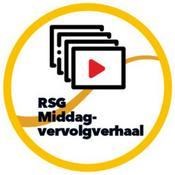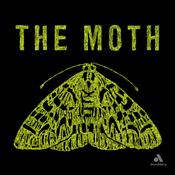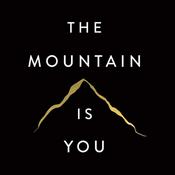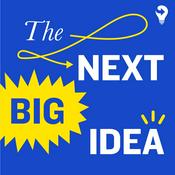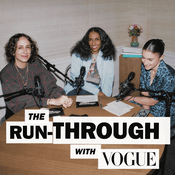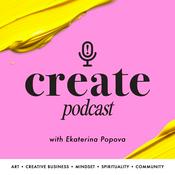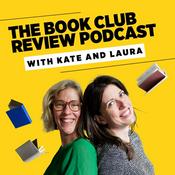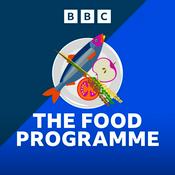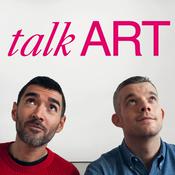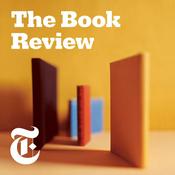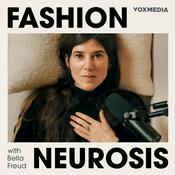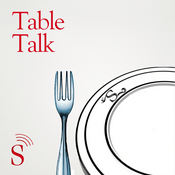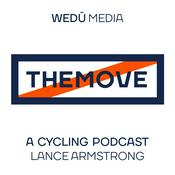187 episodes

What hundreds of designer interviews reveal about growth with Jayneil Dalal
2025/12/19 | 1h 14 mins.
We love talking about growth mindset, but curiosity without action doesn’t move your career forward. In this episode, Jayneil Dalal shares what he’s learned from interviewing hundreds of designers—and why the people who actually ship, share, and care about craft are the ones who keep growing.What if the fastest way to grow your career isn’t asking for a promotion—but becoming the designer everyone trusts?In this episode, I sit down with Jayneil Dalal to talk less about career ladders and more about what actually earns trust inside organizations. After interviewing hundreds of designers on Design MBA and Sneak Peek, Jayneil has seen the same patterns repeat across teams, companies, and seniority levels.The designers who advance aren’t the loudest or the most credentialed. They’re the ones who care deeply about their work—clean files, thoughtful handoffs, clear communication, and sharing what they learn with others. No one tells them to do this. They do it because they give a damn, and that care compounds into credibility.We also unpack the idea of “internal brand,” why chasing credit often backfires, and how being generous with your knowledge can quietly change team culture. If you’ve ever felt invisible at work or unsure how to stand out without self-promotion, this conversation reframes what influence really looks like.Topics:• 04:54 - Early Curiosity and Interviewing Journey• 06:17 - The Birth of a Podcast Idea• 07:23 - Launching Design MBA• 09:53 - The Value of Execution• 12:21 - Challenges and Realizations• 15:36 - Content Creation and Audience Fit• 19:35 - Learning from Top Designers• 22:49 - The Importance of Craft and Mentorship• 38:04 - Advocating for Yourself• 41:58 - Navigating Internal Branding• 46:34 - The Importance of Communication Skills• 48:10 - Balancing Multiple Projects• 51:36 - Effective Use of AI in Design• 53:21 - Public Speaking and Presentation Tips—Thanks for listening! We hope you dug today’s episode. If you liked what you heard, be sure to like and subscribe wherever you listen to podcasts! And if you really enjoyed today’s episode, why don’t you leave a five-star review? Or tell some friends! It will help us out a ton.If you haven’t already, sign up for our email list. We won’t spam you. Pinky swear.• Get a FREE audiobook AND support the show• Support the show on Patreon• Check out show transcripts• Check out our website• Subscribe on Apple Podcasts• Subscribe on Spotify• Subscribe on YouTube• Subscribe on Stitcher

When Up Isn’t an Option: Stop Climbing the Career Ladder with Ran Liu
2025/12/12 | 1h 2 mins.
Most designers hit senior level and suddenly there’s no obvious next step. In this episode, Ran Liu breaks down why the smartest career move may not be straight up, but diagonal. We unpack how to recognize stagnation, build visibility, stretch your skills, and create the kind of opportunities your company can’t (or won’t) give you. What if the fastest way to grow your design career isn’t a promotion? What if it's a diagonal move into work that stretches your range and makes you harder to replace?Every designer eventually hits that moment: you’ve earned trust, you’re doing great work, you’ve reached senior… and then the ladder suddenly disappears. No clear next step. No path to promotion. And maybe no manager who even understands your craft well enough to help. In this episode, I talk with product designer and Ran Talks Design host Ran Liu about why this happens so often—and why the smartest career move isn’t always upward. Ran shares how she discovered the idea of the diagonal move: a strategic shift that increases your scope, title, or company maturity all at once. She opens up about the moment she realized she was stuck—after years of impact, only to hear “you’re almost there” during promotion season. We walk through how to identify when your environment can’t (or won’t) support your growth: unclear leveling, lack of ownership, inconsistent feedback, and a ceiling that never seems to move. We also explore the kind of work you need before you make a diagonal move—building the right experience, designing your portfolio strategically, navigating “visibility guilt,” and reframing self-promotion as sharing what you’ve learned instead of bragging. Ran also breaks down practical ways to expand your influence inside your company, build a network that remembers you, and create opportunities even when no one is handing them out. If you’ve ever felt stuck at senior, this episode will show you how to take the wheel again. Give it a listen—you’ll walk away with a new way to think about your career.Topics:• 02:59 - The Career Plateau: What's Next?• 03:14 - Guest Introduction: Ran Liu• 04:08 - Understanding the Diagonal Move• 06:22 - Challenges in Career Growth• 13:28 - Taking Control of Your Career• 22:48 - Strategic Career Planning• 32:05 - The Shocking Pay Disparity Revelation• 32:34 - The Importance of Visibility in Career Growth• 33:20 - Building Confidence and Visibility• 34:59 - Leveraging LinkedIn for Networking• 36:40 - The Power of Community Engagement• 39:49 - Navigating Internal Visibility for Promotions• 44:03 - Sharing Failures and Learning from Them• 46:11 - Daily Habits for Career MomentumHelpful Links:• —Thanks for listening! We hope you dug today’s episode. If you liked what you heard, be sure to like and subscribe wherever you listen to podcasts! And if you really enjoyed today’s episode, why don’t you leave a five-star review? Or tell some friends! It will help us out a ton.If you haven’t already, sign up for our email list. We won’t spam you. Pinky swear.• Get a FREE audiobook AND support the show• Support the show on Patreon• Check out show transcripts• Check out our website• Subscribe on Apple Podcasts• Subscribe on Spotify• Subscribe on YouTube• Subscribe on Stitcher

Zero Sum Bias: Escaping the “If They Win, I Lose” Trap
2025/12/04 | 9 mins.
We talk about collaboration, but our brains often treat work like a win-lose game. In this episode, I break down Zero-Sum Bias, the belief that someone else’s win automatically means your loss, where it comes from, how it quietly shapes team dynamics, and what you can do to build more win-win outcomes at work.What if your brain has been keeping score at work this whole time? And the game it thinks you’re playing doesn’t actually exist?We repeat lines like, “If a stakeholder wins, designers lose,” or “If the PM wins, users lose,” so often that they start to feel like facts. In this episode of the Cognition Catalog, we unpack Zero-Sum Bias, the belief that someone else’s gain must come at your expense, and how that thinking quietly turns collaboration into a contest.I walk through where this bias comes from, starting with early economic and game theory models like zero-sum games, where wins and losses truly do net out to zero, and how that maps onto our evolutionary history of genuine scarcity. Food, safety, and resources really were limited, so one person’s gain often did mean someone else’s loss. The problem is that our brains still carry that wiring into modern workplaces that are full of shared goals, interdependence, and cross-functional teams.From design vs. product vs. engineering “tensions” to resourcing, prioritization, and recognition, I break down how zero-sum thinking shows up in everyday UX work—and what changes when you stop assuming only one side can win. We’ll talk about practical ways to spot the bias, shift toward non-zero-sum thinking, and design team habits that reward collaboration over quiet competition.If you’ve ever caught yourself thinking, “If they win, I lose,” this episode will help you reset the scoreboard and build healthier ways of working together.Topics:• 02:08 Debunking Zero Sum Thinking• 03:13 Origins and Evolution of Zero Sum Bias• 04:09 Impact of Zero Sum Bias on Teams• 06:18 Strategies to Combat Zero-Sum BiasTo explore more about the Naive Cynicism, don’t miss the full article @ cognitioncatalog.com—Thanks for listening! We hope you dug today’s episode. If you liked what you heard, be sure to like and subscribe wherever you listen to podcasts! And if you really enjoyed today’s episode, why don’t you leave a five-star review? Or tell some friends! It will help us out a ton.If you haven’t already, sign up for our email list. We won’t spam you. Pinky swear.• Get a FREE audiobook AND support the show• Support the show on Patreon• Check out show transcripts• Check out our website• Subscribe on Apple Podcasts• Subscribe on Spotify• Subscribe on YouTube• Subscribe on Stitcher

The Product of You: Design, Market, & Sell with Sarah Doody
2025/11/20 | 1h 6 mins.
This week, I sit down with Sarah Doody to talk about why so many designers feel stuck, and why it has nothing to do with talent. We explore how designers can apply their own UX process to their careers, create clarity through “compass statements,” and build a roadmap that actually leads somewhere.What would happen if you stopped treating your portfolio like the product—and started treating yourself like the product?This week, I’m joined by UX researcher, product designer, and career strategist Sarah Doody to unpack a hard truth: most designers aren’t broken; they’re just not applying their own process to their careers. After years of helping teams build the right products, Sarah noticed the same patterns designers use at work rarely show up in their job search. That gap is exactly what inspired her to start Career Strategy Lab.In our conversation, we dig into the symptoms of “identity fog,” why so many designers struggle to articulate their own value, and how the industry’s obsession with FANG feeds unrealistic expectations. Sarah breaks down her “Product of You” framework—designing yourself, marketing yourself, and selling yourself—and shows how a single compass statement can influence everything from what projects you showcase to which jobs you apply for.We also talk about experimentation, metrics, tailoring your materials, and the surprising reasons why designers waste months tweaking their portfolios without improving their outcomes. If you’ve ever felt stuck, lost, or unsure how to stand out in a crowded market, this episode will give you the clarity and the next steps you’ve been missing.Give it a listen. You might walk away with a completely new way to think about your career.Topics:• 01:57 – Feeling Stuck in Your UX Career• 03:28 – Understanding Career Identity Fog• 06:00 – The Importance of an Elevator Pitch• 09:57 – Applying UX Processes to Your Career• 23:24 – Experimentation and Metrics in Job Search• 26:39 – Tailoring Your Resume and Portfolio• 34:02 – The Role of ATS and AI in Job Applications• 37:47 – Rethinking Success Beyond FANG Companies• 39:40 – Golden Handcuffs: The Reality of Working at FANG• 41:17 – Creating a Life Roadmap Before a Career Roadmap• 43:39 – Defining Your Perfect Day and Career Goals• 45:17 – The Importance of Total Compensation Packages• 46:57 – Effective Job Search Strategies and Networking• 48:47 – Documenting Your Work and Portfolio Tips• 53:56 – The Value of Paid Career CoachingHelpful Links:• Connect with Sarah on LinkedIn• The Career Strategy Lab• The Career Strategy Podcast—Thanks for listening! We hope you dug today’s episode. If you liked what you heard, be sure to like and subscribe wherever you listen to podcasts! And if you really enjoyed today’s episode, why don’t you leave a five-star review? Or tell some friends! It will help us out a ton.If you haven’t already, sign up for our email list. We won’t spam you. Pinky swear.• Get a FREE audiobook AND support the show• Support the show on Patreon• Check out show transcripts• Check out our website• Subscribe on Apple Podcasts• Subscribe on Spotify• Subscribe on YouTube• Subscribe on Stitcher

Occam's Razor: When Simple Explanations Save Your Sanity
2025/11/14 | 10 mins.
This week, we break down Occam’s Razor as a practical tool for faster, cleaner decision-making. From troubleshooting bugs to interpreting teammate behavior, we explore why starting with the simplest explanation first prevents stalled projects, wasted cycles, and unnecessary team friction.What would happen if your team stopped jumping to complex explanations and started solving problems from the simplest point forward?This week on the Cognition Catalog, we explore Occam’s Razor through a lens most teams rarely consider: operational clarity. We all talk about avoiding assumptions, but the truth is that most slowdowns in cross-functional work happen because we add assumptions instead of stripping them away. Occam’s Razor gives us a mental model to prevent that.I share a real example of how one missed Friday message spiraled into a completely avoidable narrative—all because I skipped the simplest explanation. But this isn’t just about communication. The same thing happens in product reviews, sprint planning, bug triage, data interpretation, and even strategic debates. The more complexity we add early, the harder it becomes to make good decisions.We dig into how starting simple doesn’t make you naive, it makes you fast. It helps reduce noise, focus conversations, and unlock the clarity teams need to move forward. If you want a smoother workflow, fewer misunderstandings, and fewer dramatic leaps in logic, give this one a listen.Topics:• 00:00 - Introduction: Overthinking Simple Problems• 00:50 - Welcome to Cognition Catalog• 01:18 - Sponsor Shoutout: Mobbin• 02:03 - A Personal Story of Overcomplication• 02:57 - Understanding Occam's Razor• 04:50 - Applying Occam's Razor in Team Dynamics• 06:51 - Practical Takeaways from Occam's RazorTo explore more about the Naive Cynicism, don’t miss the full article @ cognitioncatalog.com—Thanks for listening! We hope you dug today’s episode. If you liked what you heard, be sure to like and subscribe wherever you listen to podcasts! And if you really enjoyed today’s episode, why don’t you leave a five-star review? Or tell some friends! It will help us out a ton.If you haven’t already, sign up for our email list. We won’t spam you. Pinky swear.• Get a FREE audiobook AND support the show• Support the show on Patreon• Check out show transcripts• Check out our website• Subscribe on Apple Podcasts• Subscribe on Spotify• Subscribe on YouTube• Subscribe on Stitcher
More Arts podcasts
Trending Arts podcasts
About Beyond UX Design
Listen to Beyond UX Design, Artwork Sounds and many other podcasts from around the world with the radio.net app

Get the free radio.net app
- Stations and podcasts to bookmark
- Stream via Wi-Fi or Bluetooth
- Supports Carplay & Android Auto
- Many other app features
Get the free radio.net app
- Stations and podcasts to bookmark
- Stream via Wi-Fi or Bluetooth
- Supports Carplay & Android Auto
- Many other app features


Beyond UX Design
download the app,
start listening.


